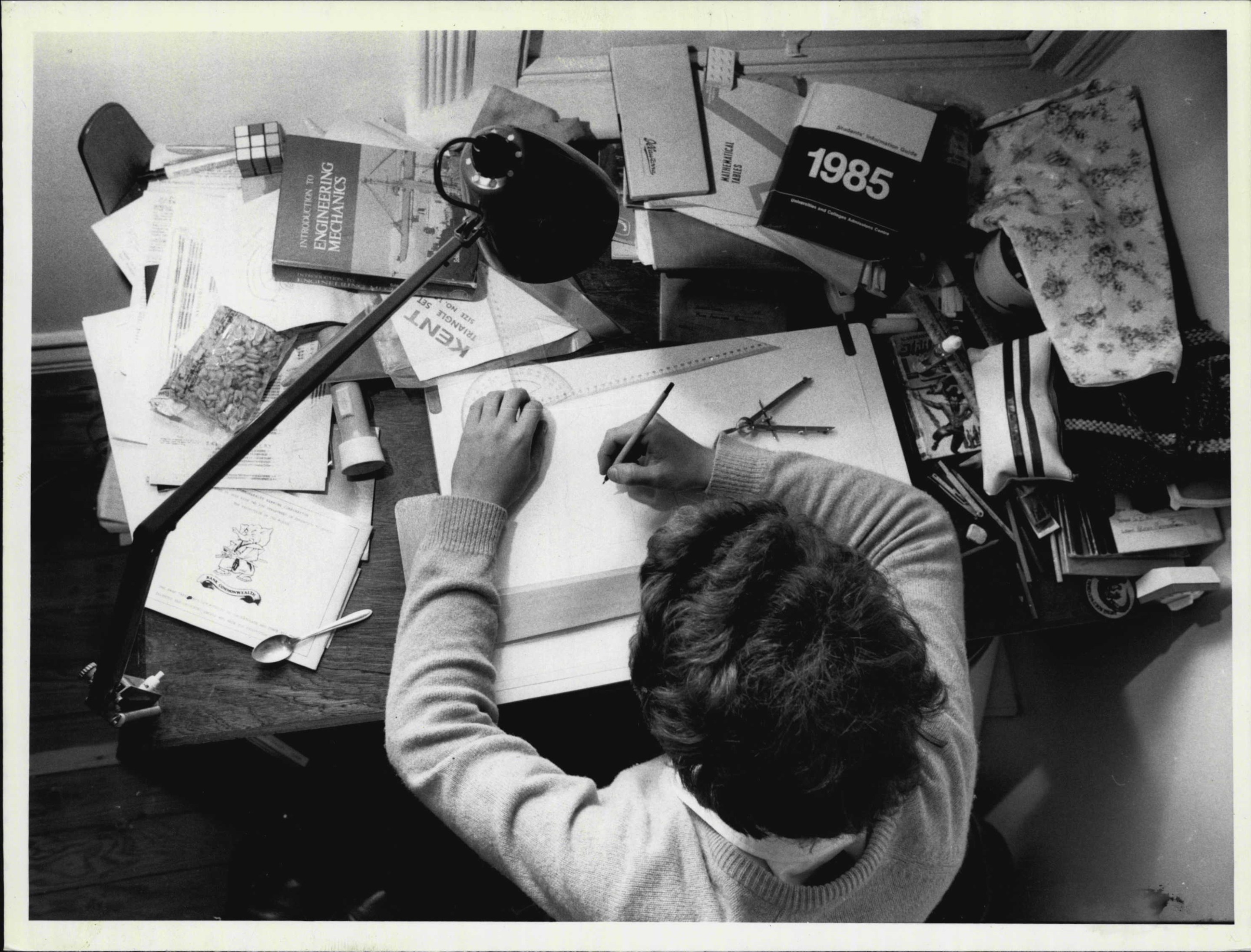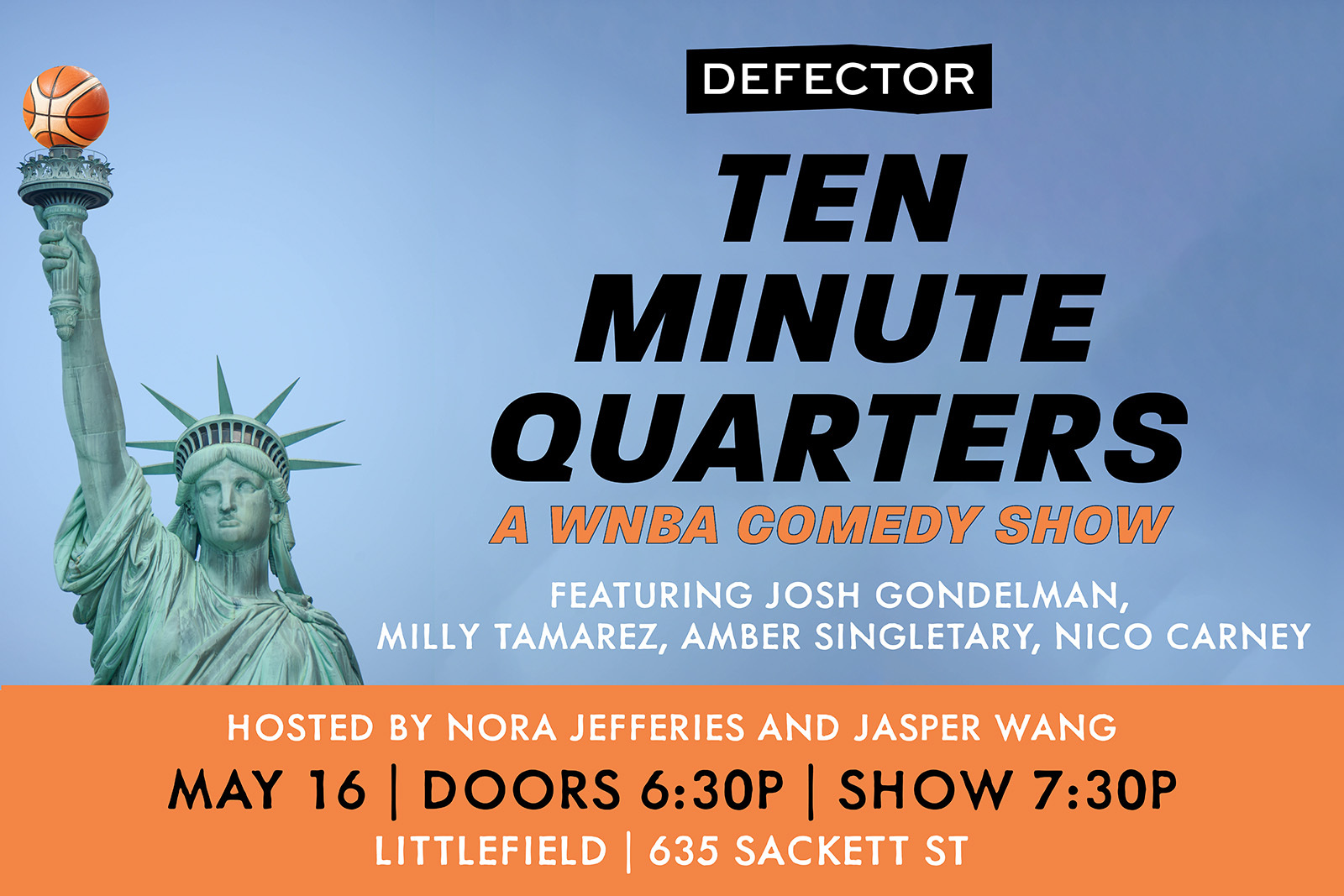Do you harbor secret creative dreams for the new year? Do you miss the way it felt to make things just for the sake of it, without any care for how good or commercially viable it was? Maybe you’ve never considered yourself an artist, but there’s a tinge of discontent you can’t escape in your daily life.
I have great news for you: Some Defector staffers are going to do The Artist’s Way together, and we’d love for you to join us.
For those of you who may not have heard of it before, The Artist’s Way is a book written by Julia Cameron that outlines a 12-week self-guided course in creativity. The Artist’s Way is kind of like Dry January for creative types, and also three times as long; people are always toying with starting it, talking about doing it, and giving up on it. That’s because The Artist’s Way is built on a contract you make with yourself to keep showing up for your creativity for 12 weeks straight.
Julia Cameron knows a little bit about putting in the work to finish a project. Cameron is a 76-year-old polymath who has written novels, musicals, plays, four poetry collections, an episode of Miami Vice, and 36 nonfiction books, many of which are iterations of The Artist’s Way. She was also married to Martin Scorsese for a year in the '70s. She attributes her prolific career to the tools she outlines in The Artist’s Way, which she originally published in 1992.
The Artist’s Way is goofy and woo-woo and a little cringe, but so is the process of making creative work. All kinds of artists swear by this process too, from Elizabeth Gilbert to Doechii. The essential building blocks in The Artist’s Way begin with morning pages, three pages of stream-of-consciousness written by hand each morning immediately upon awakening, and artist dates, weekly chunks of time set aside to consume something to nurture your creativity. An artist date could be a visit to a museum, but it could also be listening to a new album for the first time, cooking a new meal, or watching a movie. The point is to refill your creative well by spending time by yourself, having fun.
Because The Artist’s Way is 12 weeks long, it can be helpful to embark on it with a group of people for support and accountability. I asked the Defector staff if anyone was interested in doing it with me, and since I got a few volunteers, we thought it might be fun to invite readers to join us as well. The process should be pretty simple. Each week, we will individually complete the tasks in The Artist’s Way: daily morning pages, a weekly artist date, and a challenge or task of some sort outlined for that week in the book. Then we’ll meet back here and do the week’s reflection questions together.
A note on rigidity: Cameron is extremely specific about how to do The Artist’s Way. She is adamant that morning pages should be done first thing in the morning, longhand, and in an 8.5-inch-by-11-inch notebook, like a grade-school spiral book. I am making the executive decision that it is more important to make it through the process than do everything perfectly. I encourage you to figure out a way to make the process work for you, even if that means doing your morning pages in the afternoon, or missing a day here or there. Dropping out only happens once you’ve decided you’re done with the process.
If somebody chooses to drop out, they’ll have to write up an explanation for why they’re dropping out. If you’ve always wanted to try it, or if you are particularly prone to seasonal depression like me, consider this your sign!
Kathryn Xu, Sabrina Imbler, Chris Thompson, and I all committed to start The Artist’s Way in January. To give you a sense of where we’re coming from and why we’re doing this, a brief Q&A:
What is your relationship with The Artist’s Way?
Sabrina Imbler: I feel like my relationship with The Artist's Way is like my relationship to Gossip Girl. Have I ever read the book or done the exercises? No. Have I had or listened in on hourlong conversations about TAW, occasionally weighing in from the knowledge I have accrued from many friends who are past or present TAW heads or haters? Yes. My most recent TAW conversation was about a month ago with my friend Evan, who is a performance artist and was talking about how the book is both helpful and occasionally weird and problematic. They specifically cited one of Julia Cameron's examples, which was like "We all have our Africas, those dark and romantic notions that call to our deepest selves." What?
Chris Thompson: My mother-in-law gifted me a copy of The Artist’s Way when I was dating her daughter, many years ago. We had a weird relationship—she made several overt attempts to get rid of me in those early days—and for a long time I looked at the book with suspicion, as if opening it might release a cloud of sarin gas. My copy of the book has moved around with me over the years but I have never engaged with it, or even considered it, until now. The other part of this reluctance—the part of it that wasn’t rooted in paranoia—is that I have also always had a weird relationship with self-help. I tend to sneer at the entire scene and to hold its denizens in contempt; also, though, I think for most of my adulthood I’ve considered myself beyond and possibly beneath help. But why not at least see if I am capable of something better?
Kathryn Xu: I have no preexisting relationship with The Artist’s Way, but I do have a general skepticism toward the concept of self-help books. This doesn't seem to be a particularly unique sentiment among people who've done The Artist’s Way, and will not stop me from attempting it.
Alex Sujong Laughlin: I did six weeks of The Artist’s Way in 2018. I was living alone and, in retrospect, not managing my mental illnesses very well at all. I remember feeling like Julia Cameron’s whole vibe was W I L D, but I was game to put up with it to see what might come of just following the process. I ended up having a bit of a mental breakdown during Week 6 which I suspect is because I spent so much time inside my own brain during the process. Since then, I’ve periodically picked morning pages back up at different times when I’m doing particularly badly, but I haven’t attempted to do the whole thing again. I’m in a much more stable place in my life now, and I’m curious to see how it’ll feel at this point in my life.
Why are you doing The Artist’s Way this time?
Sabrina: I have never done it but it comes up so often in conversation, especially with friends who have tweaked the practice of morning pages to fit their own needs and practices and ended up loving it, that I've always been somewhat curious to try. And I lack the accountability to do it on my own. And I also got a new notebook that is pretty empty because I hate writing in it, so maybe TAW can help me succeed in my ultimate goal: becoming someone who journals.
Chris: Ugh. I have gotten so sick of my own writing and blogging! And I’m willing to believe that there are ways of becoming creatively unstuck that I will not discover by continuing to dig in one direction. I don’t think I would be able to stick to 12 weeks of sustained effort without the accountability of doing it with others, and I’m especially excited to see (and be inspired by) what this process does for some very creative people whose work I admire a lot. Also I have a very hard time with this part of the calendar, and eight weeks in Culebra are out of the budget. Having a project that helps me to be productive and normal seems like a good idea.
Kathryn: I've been saying for a while that I want to be more conscientious with what I do with my time. Everything in The Artist’s Way is stuff that I already find productive or fun—particularly the artist dates; I love doing things by myself—but having a form of structure/mild accountability on how much to do each week can be very helpful for me. I love adult homework! Also, it's the worst time of the year, so it'll be nice to have something going week to week.
Alex: I’m very prone to seasonal depression, and I dread the months of January-March the most each year. I’ve found that at the times when I make my creative process less about me and more about just getting stuff out, I’m a lot less neurotic about the whole thing and, I think, healthier. I plan to do my morning pages in front of my SAD lamp every morning as a way to incentivize both activities, and maybe I’ll emerge in April a moderately less depressed version of myself!
If you’d like to join us for 12 weeks of trying our dang best, here is your homework between now and January 13:
- Grab a copy of The Artist’s Way; I will be using the 25th edition
- Arrange your materials—whatever notebooks and pens will make you most excited to do your morning pages
- Read through the introduction, “Spiritual Electricity,” and “The Basic Tools” before we get started
- Start Week 1 on January 6!
See you in January!






